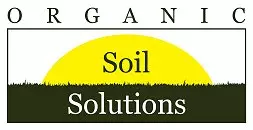CORE AERATION AND COMPOST TOP DRESSING
Home / CORE AERATION AND COMPOST TOP DRESSING
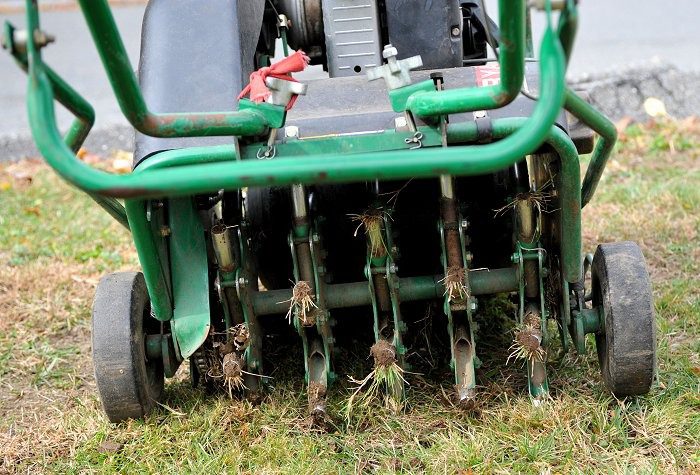
“We deliver nutrients and biology directly to the root zone with a ‘feed needle’ or we can core aerate and add compost to make your soil a living, breathing, environment for thriving plants.”
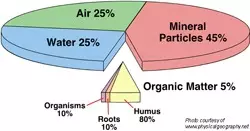
Someone explained compaction to me as the difference between living in a house with 10 foot ceilings and one with 5 foot ceilings. It’s harder to get around, there is less air and life becomes more difficult. It’s the same with plants. There is less air and water, your roots can’t grow and your neighbors (the earthworms) don’t visit.
Core aeration reduces compaction and allows water and oxygen to get to the plant. Compaction reduces the amount of available oxygen and pore space for water and biology to travel. The soil should be 25% air and 25% water, and just like us, the plant needs both to survive. Most organic soils should not need aeration and doing it too often reduces the amount of organic matter in the soil. Areas with a lot of traffic or activity will need help. That’s why the area in front of the goal is usually bare. When we do the fall fix, each truck has a core aerator, in case your soil needs help. We don’t generally core aerate in the spring because the cores bring annual weed seeds to the surface.
Core aeration can also stimulate root growth in sod lawns that need to connect to the soil. Thatch, a mat of above ground roots that prevents air and water from getting to the soil, can also be broken up with core aeration. It brings soil biology to the surface to decompose thatch and allows air and water to circulate. Sometimes the aerator can be used for over seeding to fill in a sparse lawn. Core aeration also helps reduce moss by allowing the moist soil to dry out.
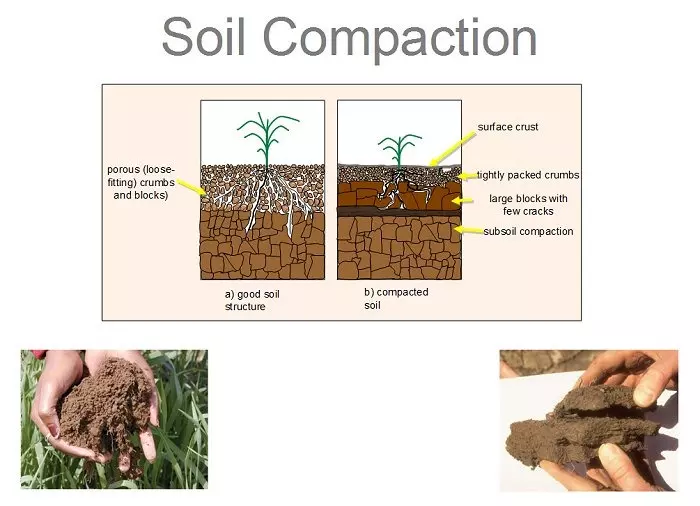
years, soil compaction can lead to stunted, drought stressed plants due to decreased root growth. Soil compaction in wet years decreases soil aeration, causing the grass to drown. Heavy equipment, a dumpster or a pile of topsoil can cause damage to the soil structure. Soil structure is important because it determines the ability of a soil to hold and conduct water, nutrients, and air necessary for plant root activity.
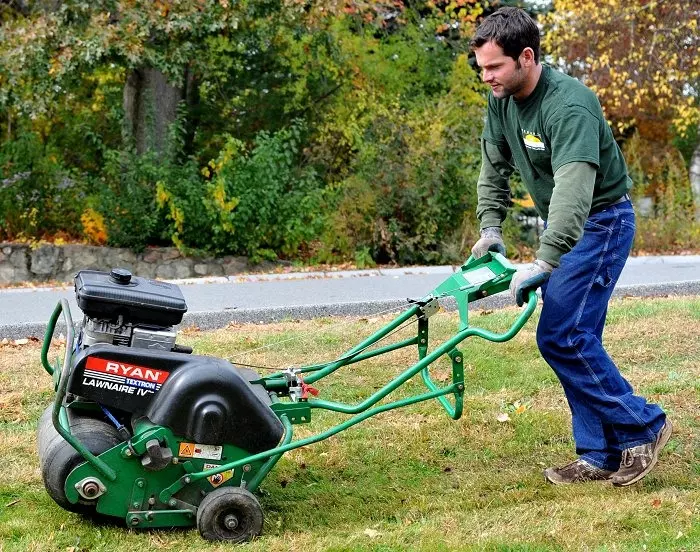
compaction occurs when soil particles are pressed together, reducing pore space between them Compacted soils contain few large pores and have a reduced rate of both water infiltration and drainage from the compacted layer. This occurs because large pores are the most effective in moving water through the soil when it is saturated. In addition, the exchange of gases slows down in compacted soils, causing an increase in the likelihood of aeration-related problems. Finally, while soil compaction increases soil strength, the ability of soil to resist being moved, a compacted soil also means that roots must exert greater force to penetrate the compacted layer.
Compost Top Dressing
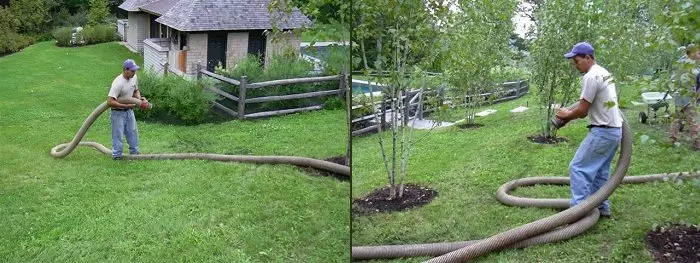
There is nothing that improves soil like compost. It is full of the life and organic matter that make for an active, healthy environment. Earthworms and other denizens of the soil love it. Diseases and plant pathogens do not like compost. It has been carefully heated to kill opportunistic pests and weed seeds. There is too much competition in active, healthy compost for pathogens to thrive.
Unlike the air we breathe or the water we drink, soil is often overlooked as an essential element in a balanced, sustainable environment. Healthy soil is critical for a healthy lawn and plants. In many areas of New England, the top layer of soil is thin. And in many yards, construction and years of neglect have removed healthy soil and left only poor soil behind. Compost is a natural organic material that is produced when leaves, plant residue, grass clippings and other yard waste break down over time. Organic materials decompose in nature to feed soil and make it healthy.
Compost provides nitrogen, phosphorus, potassium, sulfur and micro-organisms that are essential for plant growth. It holds soil and water particles together to reduce erosion. It binds itself to polluting metals, pesticides and other contaminants to prevent them from washing into waterways or being absorbed by plants. The compost we use has been tested to make sure it has plenty of the proper bacteria, fungi, protozoa and nematodes that make things happen. We have done trials to see how well it germinates seed.
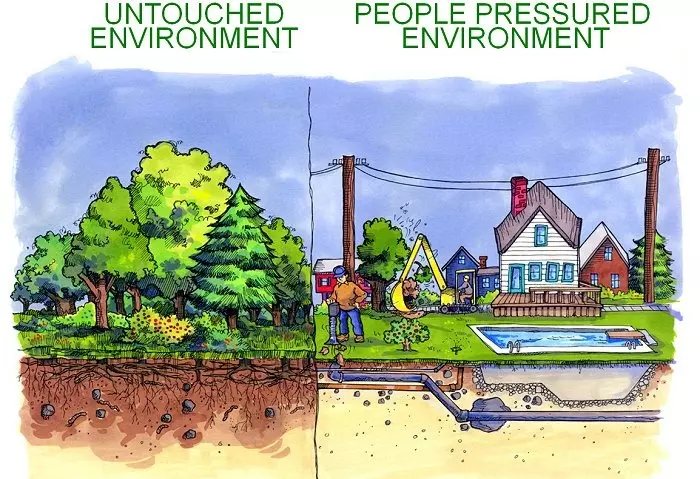
We have seen a lot of lawns turn around after a compost application. Growing grass in a compacted, lifeless soil with little organic matter can be frustrating. Establishing deep roots and germinating seed in an active, healthy soil can be a gratifying experience. We always core aerate before spreading compost so it gets deep into the soil. We only use ¼ to ½ an inch on established lawns so the grass won’t be smothered. For small lawns, we spread the compost with wheelbarrows and shovels. For larger areas, we contract to a company with a truck that blows the compost out of a mulch sprayer.
